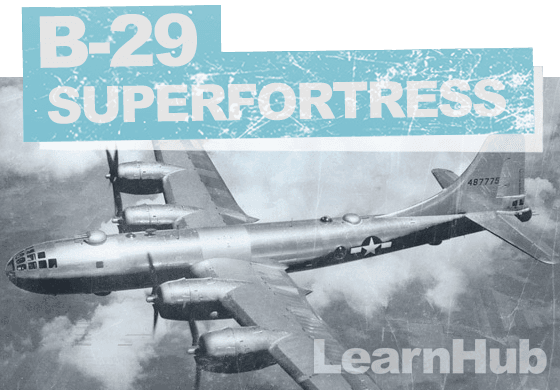The B-29 Superfortress was a heavy bomber aircraft developed by Boeing in the 1930s for the United States military. It was designed to be a long-range strategic bomber capable of delivering a large payload of bombs over long distances. Some of the key design features of the B-29 include:
Pressurized cabin: The B-29 was the first production aircraft to feature a pressurized cabin, which allowed the crew to fly at high altitudes (up to around 35,000 feet) without the need for oxygen masks. This made the B-29 well-suited for high-altitude strategic bombing missions.
Four Wright R-3350 Duplex-Cyclone radial engines: The B-29 was powered by four Wright R-3350 Duplex-Cyclone radial engines, which provided a maximum output of around 2,200 horsepower each. These engines allowed the B-29 to achieve a top speed of around 350 mph and a range of over 3,000 miles.
Wingspan: The B-29 had a wingspan of over 141 feet, which gave it a large payload capacity and made it one of the largest aircraft of its time.
Defensive armament: The B-29 was equipped with a variety of weapons for self-defense, including machine guns and turrets. It also had armor plating to protect the crew and vital systems from enemy fire.
Electronic warfare systems: The B-29 was equipped with a range of electronic warfare systems, including radar and electronic countermeasures, to help it evade enemy defenses and detect enemy aircraft.
Overall, the B-29 was a complex and sophisticated aircraft that played a key role in the Allied victory in World War II and the Korean War.
- The Battle of Midway: Turning the Tide in the Pacific - June 7, 2023
- The D-Day Operation of June 6, 1944 - June 6, 2023
- The B-29 that Changed History - June 4, 2023



